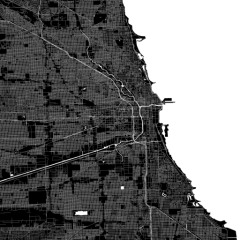
While Chicago holds onto its spot as third largest city in the United States, it is also the slowest growing major city in the country since 2000. Earlier this year, MacArthur's Chicago Commitment program commissioned a study by the Institute for Research on Race & Public Policy (IRRPP) at the University of Illinois Chicago to better understand shifts in the demographic composition of Chicago. The resulting report, "Shifting Population Trends in Chicago and the Chicago Metro Area," sheds light on the relationship between racial inequities and patterns of population growth and decline.
Between 2000 and 2010, the city of Chicago lost 25 percent of its Black residents. During this same period, the population of White residents fell five percent and the Latinx population grew nearly nine percent. Moreover, all of the city's population loss is concentrated in the South and West Sides, while the Downtown, North, and Southwest Sides have experienced population growth. The researchers write, "As policymakers and local leaders debate the future of the Chicago region, it is crucial that they consider inequality as a central issue shaping residents' lives and influencing the region's population trajectory."



